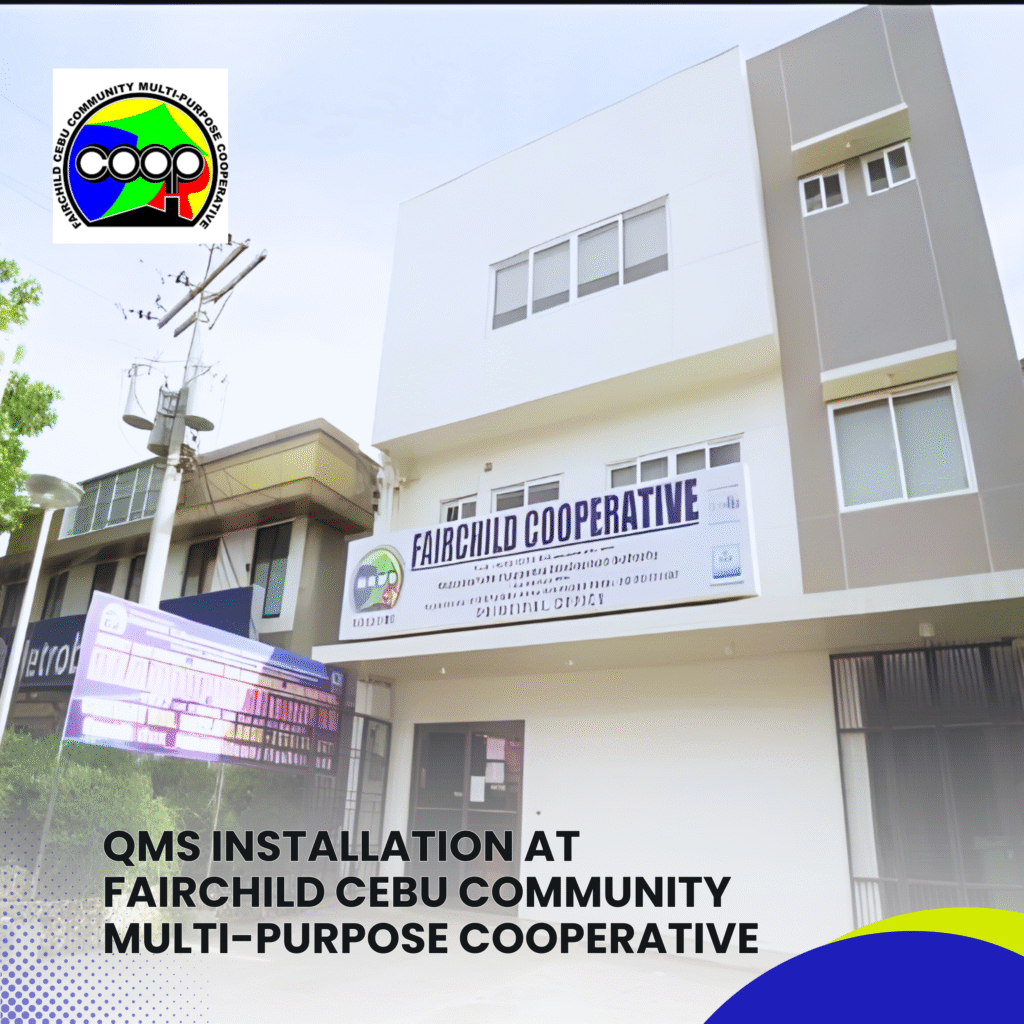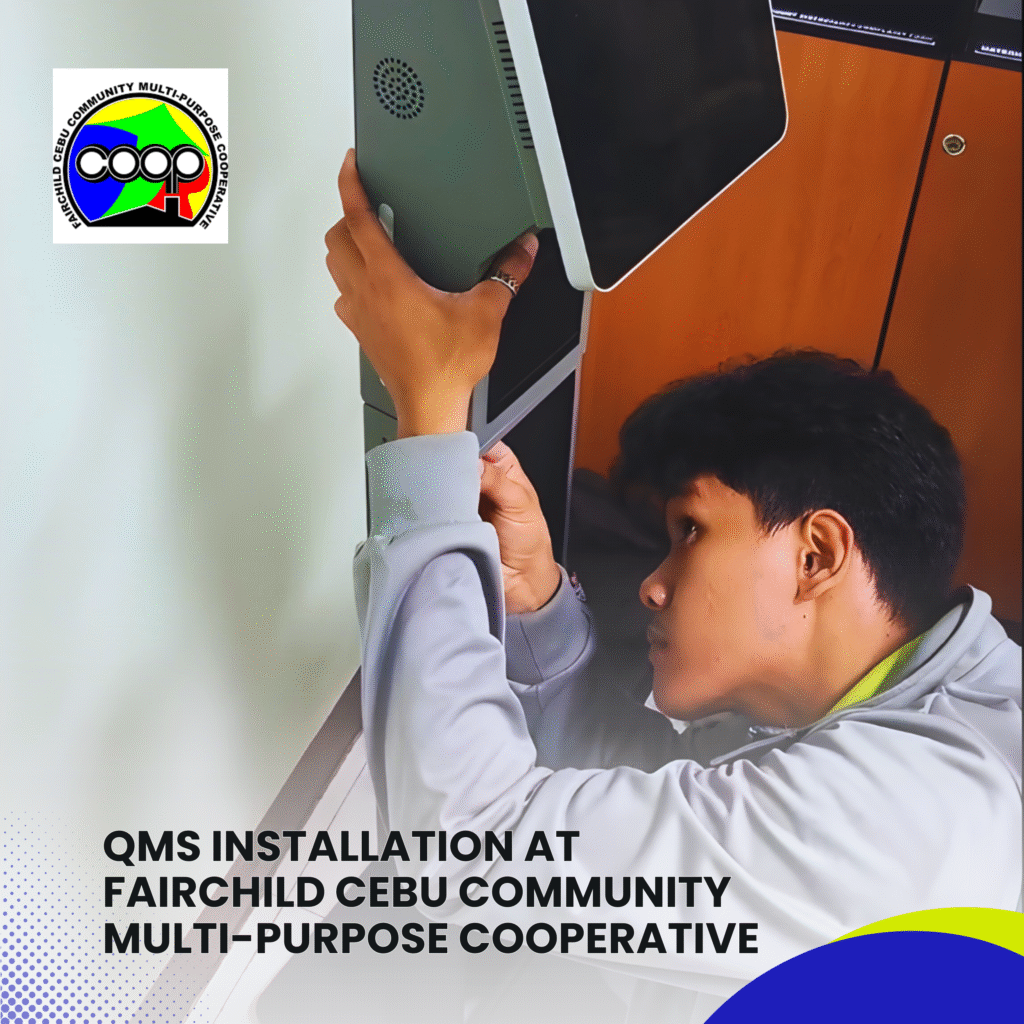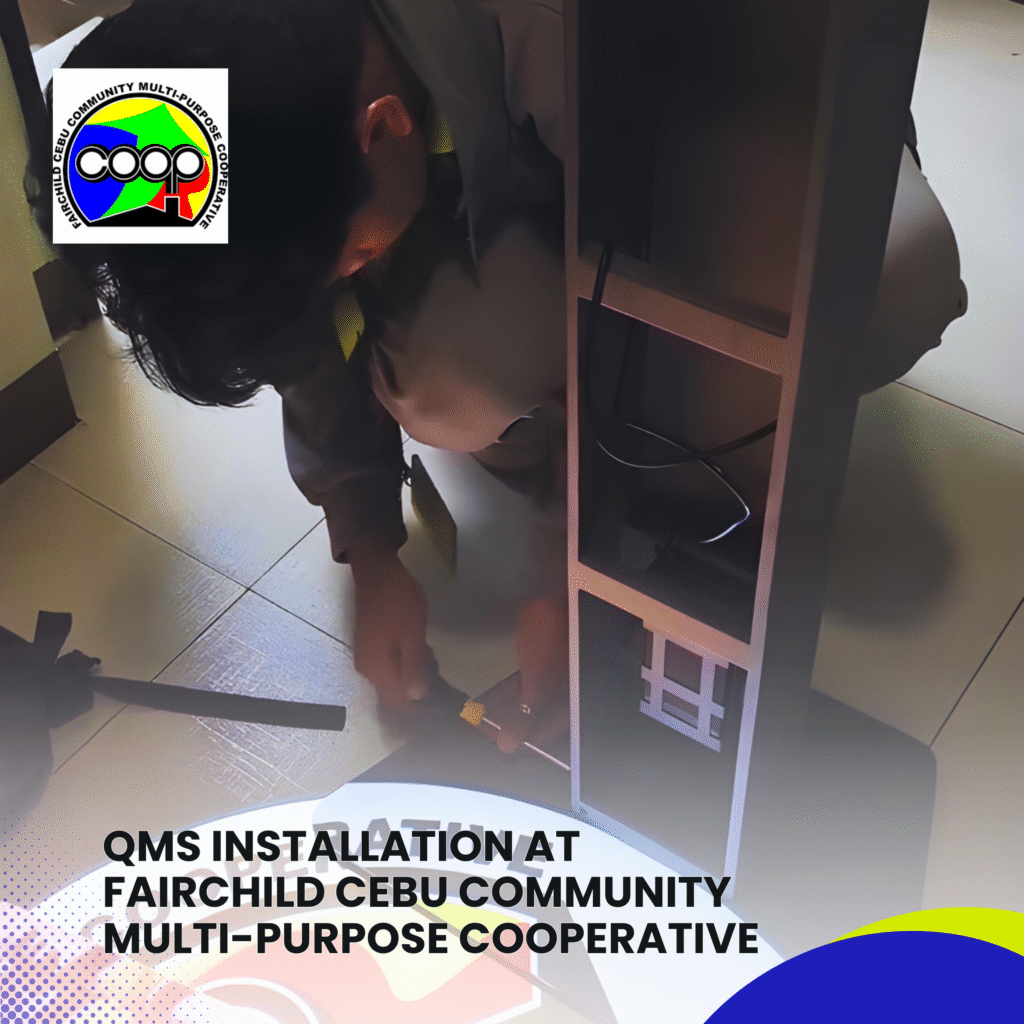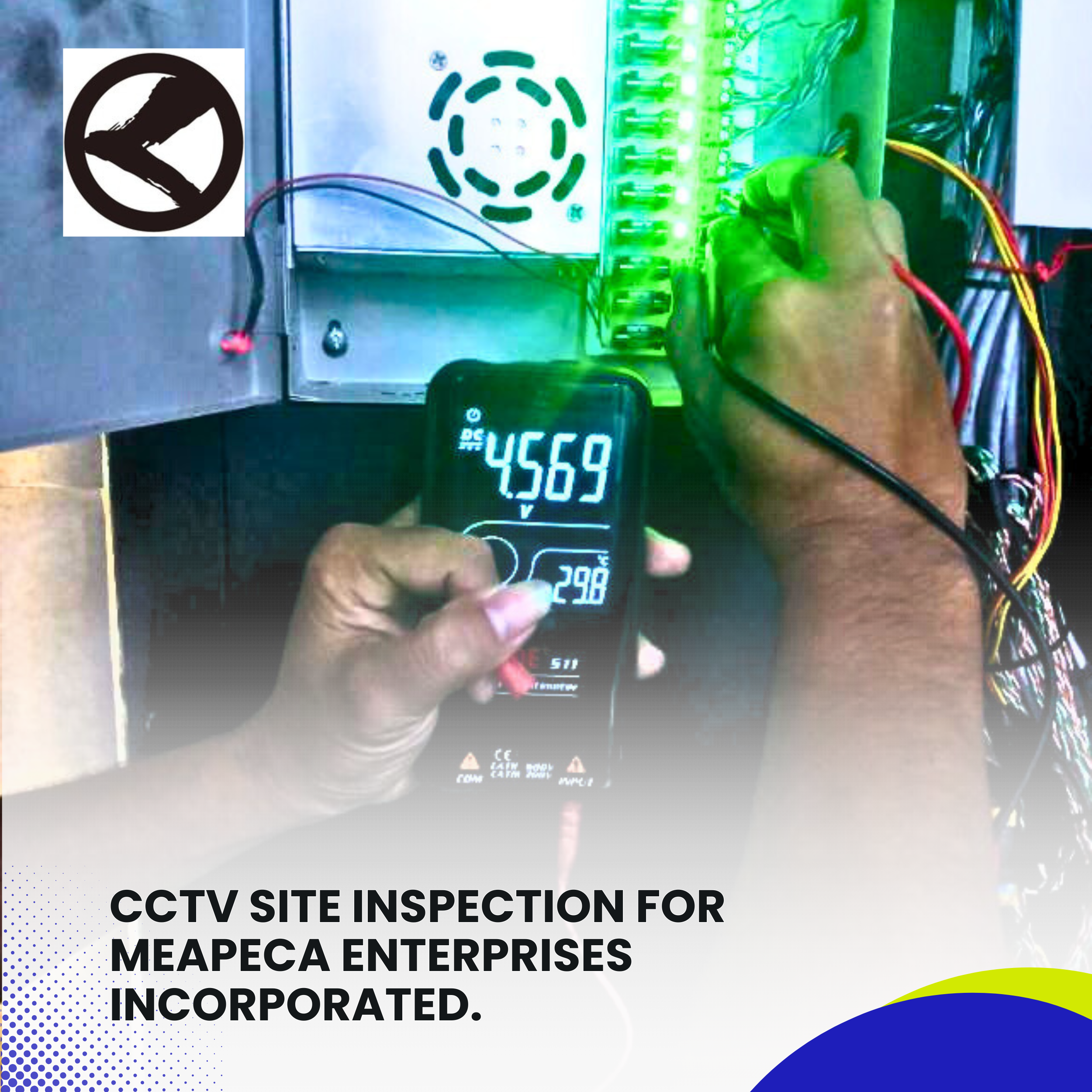CCTV IT Support at San Jose Pension House. Introduction. In line with the company’s commitment to delivering reliable technical assistance and maintaining efficient surveillance systems, the IT support team conducted a troubleshooting …
QMS Installation at Fairchild Cebu Community Multi-Purpose Cooperative: Enhancing Customer Service Efficiency




Introduction
In today’s fast-paced digital world, customer service efficiency has become a top priority for institutions that aim to deliver exceptional service experiences. One way to meet this demand is through the deployment of a Queuing Management System (QMS). The Fairchild Cebu Community Multi-Purpose Cooperative recognized the need to streamline customer flow and improve service turnaround times — which led to the successful implementation of a robust QMS infrastructure at their facility. This article outlines the scope of the project, the services delivered, and the tangible benefits realized by the organization.
Project Overview
The Fairchild Cebu Community Multi-Purpose Cooperative, a respected financial and service-oriented institution based in Cebu, Philippines, sought to enhance its customer service environment. Their key objectives were to reduce physical congestion in waiting areas, promote organized queuing, improve operational transparency, and ensure timely service delivery to members and clients.
Recognizing these needs, our team was engaged to implement a comprehensive Queuing Management System (QMS) solution tailored to the cooperative’s workflow and service structure. The end goal was to introduce a more intelligent, automated, and customer-friendly way of managing queues — and to reinforce the cooperative’s commitment to modernizing its service approach.
Services Provided
The scope of our engagement with Fairchild Cebu Community Multi-Purpose Cooperative included the following core services:
- Installation of the Queuing Management System (QMS)
- Set up and configuration of a kiosk tablet
- Integration and configuration of a thermal printer for the QMS
Let’s delve into each of these services in detail.
1. Installation of the Queuing Management System (QMS)
The heart of the project was the installation of a Queuing Management System, which functions as a digital platform to automate the service queue process. This system was designed to:
- Handle multiple service categories
- Issue queue numbers to incoming clients
- Display real-time queue updates
- Allow staff to call and serve clients in order
- Record timestamps for service analytics
The QMS software was deployed on a local server to ensure stable, offline functionality with minimal dependency on external internet connectivity. It supports multiple service counters and allows dynamic queue configurations, enabling administrators to define service categories and prioritize queues as needed.
Customization and Configuration:
We configured the QMS to align with the cooperative’s internal service flows. This included:
- Defining specific service counters for departments such as Loans, Member Services, and Cashiering
- Customizing queue display labels
- Implementing audio-visual announcements
- Enabling user-level access for admins and frontliners
User Interface:
The system was developed with a clean and intuitive interface. Staff members can view the current queue, call the next client, skip, or recall a previous number — all with a few clicks. Clients see their number and estimated wait times, which improves customer satisfaction and reduces uncertainty.
2. Set Up of the Kiosk Tablet
To ensure a seamless queue registration experience for walk-in clients, we deployed and configured a kiosk tablet. This device acts as the customer-facing entry point to the QMS.
Hardware Placement and Configuration:
The tablet was mounted securely in the cooperative’s reception area where it is easily visible and accessible to clients. The following configurations were made:
- Full-screen QMS web app interface for touch-based interaction
- Locked-down mode to restrict usage solely to the queuing app
- Automatic startup and reconnection scripts in the event of power loss or device restart
- Standby mode settings to ensure energy efficiency without compromising responsiveness
Customer Workflow:
Upon arrival, clients can simply tap the tablet, choose the service they require (e.g., Membership, Loan Inquiry, Payment), and receive a printed queue number automatically. The interface was built with accessibility in mind, using large icons and clear instructions, suitable for users of varying ages and technical proficiency.
Touchscreen Calibration and Testing:
To guarantee optimal performance, we calibrated the tablet’s touchscreen and tested responsiveness under varied conditions. This ensured accurate selections and minimal downtime.
3. Integration of Thermal Printer for the QMS
A critical part of the queuing experience is the thermal printer, which provides clients with a printed queue number after they register via the kiosk.
Printer Configuration:
We integrated a high-speed thermal receipt printer that prints queue numbers almost instantaneously. It was set up to:
- Automatically format and print queue tickets with the client’s number, selected service, and timestamp
- Operate with minimal supervision, with alerts for paper replacement
- Connect via USB or network, depending on tablet compatibility
Software Integration:
The QMS software was configured to communicate directly with the printer. Print commands are sent based on the service selection made on the tablet. We also added a fallback mechanism to reprint a number in case of hardware interruption or missed print.
Sample Ticket Output:
Each ticket includes:
- Queue Number (e.g., A104)
- Service Category (e.g., Cashier)
- Date and Time of Issuance
- Optional: Estimated Wait Time
- Custom Branding (Cooperative Logo or Header)
Staff Orientation and Training
Beyond technical setup, our implementation package included on-site training and orientation for both frontliners and administrative staff.
Training Objectives:
- Ensure staff understand how to manage queues using the system
- Teach basic troubleshooting steps (e.g., restarting the kiosk or printer)
- Demonstrate admin panel usage for editing service options or generating reports
- Answer questions about queue order, skipping numbers, and status displays
Staff were provided with a digital user manual and quick-start guide. This allowed for smooth onboarding and rapid adaptation to the new workflow.
System Testing and Go-Live
After installation and configuration, we conducted end-to-end system testing to validate the integrity and responsiveness of the QMS setup.
Testing Checklist:
- Tablet interaction and form submission
- Queue ticket printing
- Counter interface for calling and serving clients
- Display screen (optional) responsiveness
- Audio-visual prompts
- Power cycle behavior
- Offline queue functionality
Once testing was successful and minor adjustments were completed, the system was officially turned over and placed into production use. We remained on standby support during the go-live period to provide immediate assistance if required.
Benefits Realized by Fairchild Cebu Community Multi-Purpose Cooperative
Following the implementation of the QMS, Fairchild observed immediate and long-term improvements in its service delivery. Some of the key benefits included:
1. Improved Client Experience
Clients no longer need to stand in crowded lines. They are free to wait in designated areas while tracking their number on the display or listening for audio prompts.
2. Organized Queuing Process
The previous manual number-calling or verbal queuing system was prone to confusion and errors. Now, the digital system ensures an orderly, transparent queue.
3. Service Time Analytics
Administrators can now access reports detailing average service times, daily client volumes, and staff performance metrics. These insights help in scheduling and resource allocation.
4. Reduced Staff Workload
Frontliners spend less time managing lines or handling complaints about wait times. This allows them to focus more on customer engagement and accurate service delivery.
5. Scalability and Modularity
The system was designed with scalability in mind. Additional tablets, printers, or service counters can be integrated in the future as the cooperative grows.
Post-Installation Support and Maintenance
Our commitment to client success doesn’t stop at installation. After the go-live, we provided:
- One-month free remote support for configuration changes or troubleshooting
- Hardware warranty support (for printer and tablet)
- Periodic software updates and security patches
Conclusion
The installation of a Queuing Management System at Fairchild Cebu Community Multi-Purpose Cooperative marks a significant step forward in their journey to deliver efficient, technology-driven customer service. Through our tailored approach — encompassing system design, hardware setup, software integration, and staff training — we were able to provide a solution that enhances the cooperative’s operations while also improving the day-to-day experience of its clients.
By embracing this digital transformation, Fairchild not only modernizes its service processes but also positions itself as a forward-thinking organization committed to the welfare and satisfaction of its members.
Case Studies
IT Support at Bernie Menze Residence. Introduction. As part of the company’s commitment to providing reliable and efficient technical assistance, the IT support team conducted a service visit to the Bernie Menze …
Site Inspection for MEAPECA ENTERPRISES INCORPORATED. Introduction. As part of the company’s ongoing commitment to maintaining efficient and reliable electrical and surveillance systems, a site inspection was recently conducted at MEAPECA Enterprises …

